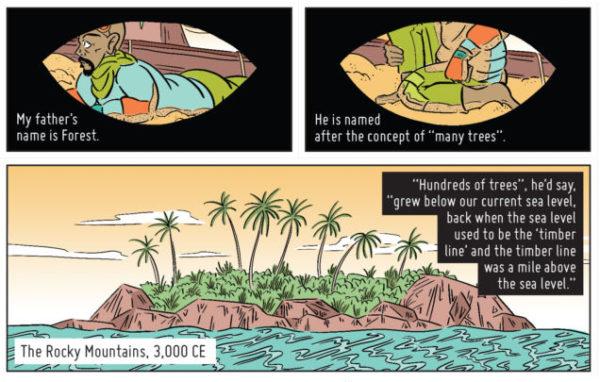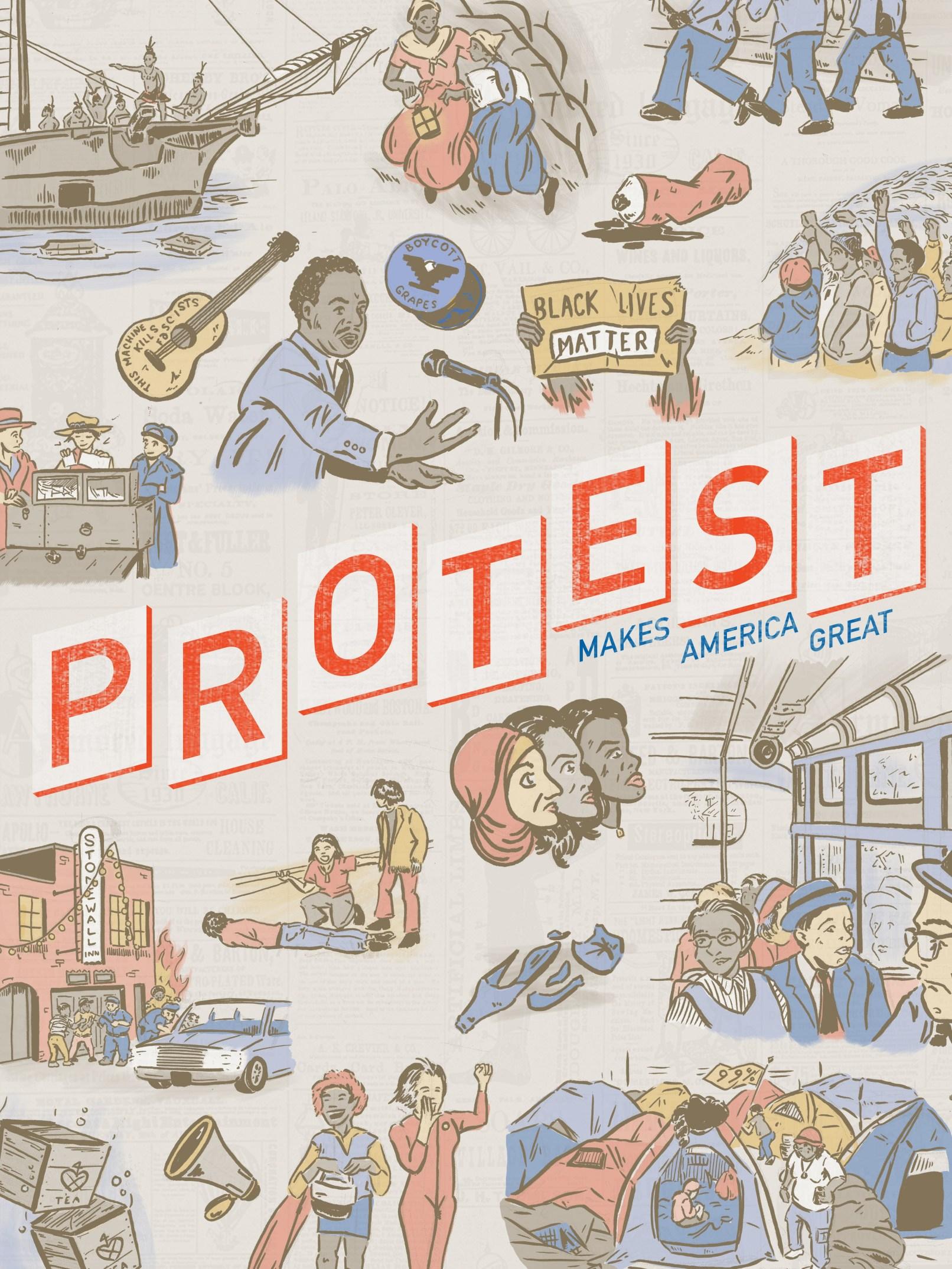As a Filipino-American printmaker, illustrator, comic artist, and educator, Karl Orozco’s work often grapples with the legacy of colonialism, seeking to “challenge assumed notions of race, family, migration and power.” The Queens, New York-based artist’s comics typically follow characters of color as they migrate, build community, and confront environmental crisis. Grappling with multifaceted topics such as identity and colonialism, Orozco is fascinated by how symbols change in meaning based on context, pointing out that, “To one person a palm tree could conjure the words ‘exotic’ or ‘foreign,’ and to another, ‘motherland.’”
Orozco’s creative process usually starts at the library. He likes to gather references on a topic, and then fill his sketchbook with ideas. “I try to fill a full two-page spread with relevant pictures and quotes. When complete, I step back to see if any new connections arise and use those in-betweens as starting points.” One recent comic, “Low Tide,” took inspiration from science fiction authors Octavia Butler and Chang-Rae Lee to tease out conversations about the desire to discover other Earth-like planets, the history of colonialism, and how they relate to marginalized communities. “As this planet becomes less and less inhabitable,” he noted, “I worry about who gets left behind in the quest for survival.”
When he’s not making comics, Orozco creates promotional materials for racial justice organizations such as the Asian Arts Initiative, 18 Million Rising, and Anakbayan New York-New Jersey, a Filipino youth organization. For him, art can convey advocacy messages with a power that other formats often lack. “An organizer once told me that art is like a flower,” Orozco said. “Its appearance is like petals, which beckon the honeybees and hummingbirds, but its influence is small without a message—or seed—to spread. Artists serve as interpreters for complex ideas and are key in engaging audiences outside our movements.”
After the 2016 election, Orozco left his graphic design job for the Queens Museum, where he teaches art to middle-school students. “I have always loved working with youth and find art extremely important in navigating our current political and social climate,” he said. “I want youth to feel agency over their futures by cultivating a sense of pride and power in themselves and their communities.”


